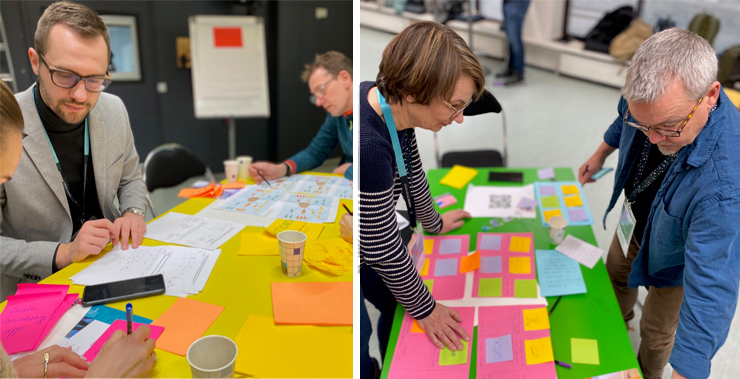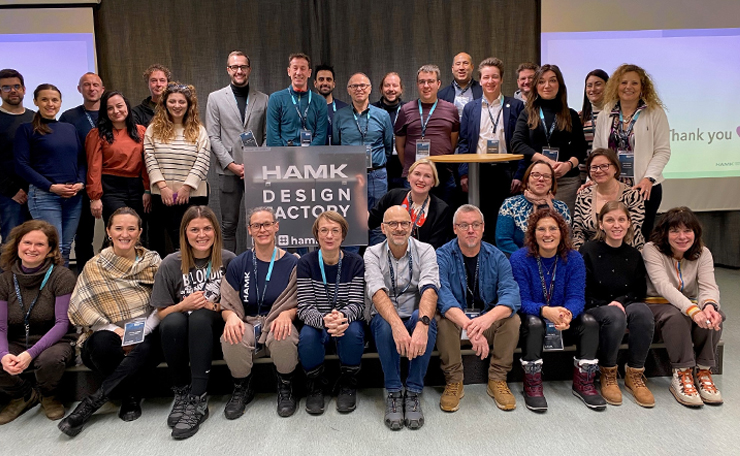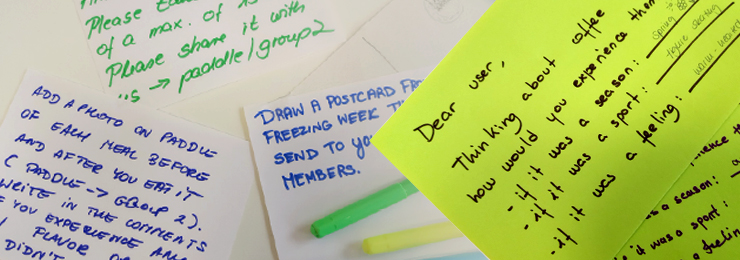What happens if you bring together 40 participants from European universities of applied sciences and give them three days to plan, collect, and analyse experimental data with design probes. Chaos guaranteed? Quite the contrary. It turned out to be an eye-opening for participants – and organizers- on the importance of empathy and resulted in a set of user-proofed ideas for designing a perfect Freezing Week.
Good things start with “What if…”
Freezing Week is an annual international staff week at Häme University of Applied Sciences (HAMK). This year the topic was Data-Driven Empathy. As an organising team, we wondered what we could offer to our international guests visiting us in February.
We started thinking aloud. It would be nice to do something hands-on in the spirit of design thinking. What if we let the participants test and try a design method and have them collect and analyze data for empathy themselves?
It made perfect sense as HAMK embraces design thinking. Design thinking is a human-centered approach to practical and creative problem-solving and learning often introduced through working on multidisciplinary industry projects.
Even if we were hesitant about how it would all work in such a short time span, we decided to offer our guests a crash course on applying design thinking in practice.
About uncertainty and empathy
“Bearing with uncertainty is a part of the process”, explained Anna Huoviala in her introductory lecture to design thinking on the opening day of Freezing Week. Starting a project without knowing where it will lead can feel uncomfortable. Design thinking provides a framework to navigate an unknown terrain.
The design thinking process starts with collecting data to understand people whom the work is to benefit. This phase is called empathising. It sets focus for the rest of the process. Ideally, design thinking processes are open-ended in nature. This means that the outcome is not predetermined but a genuine result of the process.
Empathy can be built with both quantitative and qualitative methods. Creative qualitative approaches to user research can enrich data and create a more holistic understanding of user needs.
This is what we wanted to demonstrate with our crash course. For example, event organisers may collect data through registration and feedback forms. They work for a large number of participants but may not provide information on reasons that affected their overall experience. Furthermore, feedback questionnaires are retrospective and do not capture data on participants’ experiences while experiencing the event. Design probes, however, do just that.
Design probes capture experience
Design probes are explorative, generative, and creative by nature and are used in the early stages of a design thinking process. At best, the probes can uncover the users’ latent needs and aspirations. The data collected with the probes is interpreted and used as a source of inspiration and ideation. Design probes are not an off-the-self method and need to be planned and re-designed for each project.
Design probes are a self-documentation method in which the users observe and document their everyday lives by completing the tasks given in a probe kit. After some days the probe kit is returned to the designers for analysing. The probes produce authentic and unbiased data as the users create the data themselves. The users often find the design probes fun and motivating to complete. For designers, they provide unique insights.
Designing perfect Freezing Week
Our crash course provided an opportunity for data gathering from the Freezing Week experience in real time. The mission was to build a holistic participant experience for 10th anniversary Freezing Week in 2024.
On the first day, we divided the participants into small teams. Each team planned and built a probe kit around an aspect of a holistic experience. At first, the participants found it difficult to come up with tasks that capture the experience in unconventional ways. As the workshop progressed the teams developed interesting and creative probe kits. The kits were distributed to other participants to be completed during the following day’s programme.

We started the third day by collecting the probe kits and handing them back to the teams. The teams had two hours to go through the data and develop actionable insights. At the end of the workshop, the results were presented to all participants.
Blown away with the results
Learning to cook Finnish food. Speed-dating on a “rotating dinner table”. Learning to set a campfire. A socializing app for networking. Working in multigenerational teams. These were just some of the ideas for the perfect Freezing Week 2024.
To conclude, the design probes worked surprisingly well in this kind of workshop setting and a short time frame. Motivation and engagement of the participants was a key to the successful outcome.
“Users understood the tasks we asked for and provided us with inspirational & valuable input”, one of the teams reflected. They also recognised areas to improve the probe kit, for example using a more attractive design and a wider variety of methods for collecting data.
We all learned a lot from the potential of this method and how versatile it can be. Embracing uncertainty certainly paid off.

Authors:
Anna Huoviala, Head of Degree Programme in Design, HAMK
Jaana Sipilä, Education Specialist, School of Entrepreneurship, Business and Technology, HAMK




